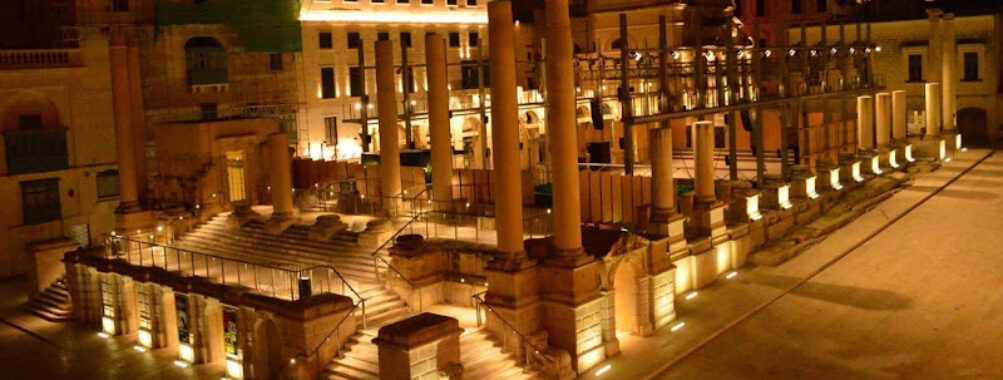
Pjazza Teatru Rjal
Table of Contents Pjazza Teatru Rjal, right in the heart of Valletta, is one of those places that makes you pause for a second. It’s not your typical theater – it’s a story carved into stone, steel, and open air. What’s fascinating is that this open-air theater stands on the ruins of the Royal Opera House, which was tragically bombed during World War II. Instead of rebuilding it in the same old way, Malta decided to turn the scars of its past into something living and breathing. And honestly, that’s what makes it so special. You can almost feel the layers of history here – the grandeur of its 19th-century design, the wartime destruction, and the rebirth of something new and bold. Walking into the site, there’s this strange mix of nostalgia and excitement. The columns of the old opera house still stand tall, framing the modern stage. The contrast between the old limestone and the sleek steel details gives it a raw, emotional beauty. It’s not overly polished – and that’s what I love about it. You can sit down, look around, and imagine what it must’ve been like before the war, then realize how resilient this tiny island nation has been. The place tells a story of loss, creativity, and renewal without saying a word. It’s not just a tourist stop – it’s an active cultural hub. Locals come here for concerts, theater, and even small community events. The acoustics are surprisingly good for an open-air venue, and when the Maltese summer night sky glows above, the atmosphere feels almost cinematic. Sure, not every seat is perfect, and sometimes the sound can get lost in the wind, but that’s part of its charm. You don’t come here expecting perfection – you come for the experience, the emotion, and the setting that feels like nowhere else. If you ask me, the best time to visit is during the late spring or early autumn months. The weather’s warm but not unbearable, and the theater’s open-air design really shines under the soft evening light. Summer can be magical too – especially when there’s a live concert under the stars – but it does get crowded, and you’ll want to book ahead. Winter performances have their own charm, though fewer events run during that season. Still, even if there’s no show on, it’s worth stopping by just to see the architecture and take a quiet moment among the ruins. There’s something poetic about standing there when it’s empty – almost like the place is whispering its history to you. Getting to Pjazza Teatru Rjal is pretty straightforward. Valletta’s compact size makes it easy to explore on foot, so if you’re already in the city, you’ll probably stumble across it without even trying. For those coming from outside Valletta, the main bus terminal is just a few minutes’ walk away. Taxis and ride-sharing services are also easy to find. If you’re driving, parking can be tricky – Valletta’s narrow streets aren’t exactly car-friendly – but there are parking facilities just outside the city walls. Personally, I’d say ditch the car and walk in; it’s part of the experience. The city’s streets are full of character, and by the time you reach the theater, you’ll already be in that relaxed, curious traveler mindset. Here’s the thing – visiting Pjazza Teatru Rjal isn’t just about watching a show; it’s about soaking in the atmosphere. So, a few tips from experience: And here’s a small personal note – I once attended a local orchestra concert here, and during one of the softer pieces, the wind rustled through the columns. It wasn’t planned, of course, but it added this hauntingly beautiful layer to the music. That’s the kind of thing that makes Pjazza Teatru Rjal unforgettable. It’s a place where history doesn’t just sit still; it interacts with the present in subtle, almost magical ways. For travelers who love places that blend culture, history, and creativity, this spot is a must-see. It’s not pristine or overly commercialized, and that’s its strength. It stands as a living reminder that even ruins can have new life, that art can grow from destruction, and that sometimes, the most powerful stories are told not by what’s rebuilt, but by what’s left behind.Description
Key Features
Best Time to Visit
How to Get There
Tips for Visiting
Location
Places to Stay Near Pjazza Teatru Rjal
Find and Book a Tour
Explore More Travel Guides
No reviews found! Be the first to review!